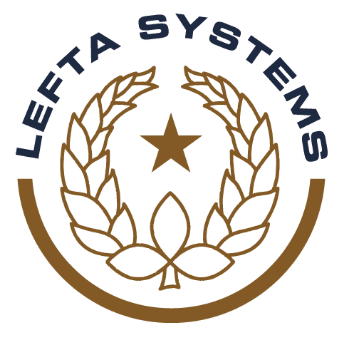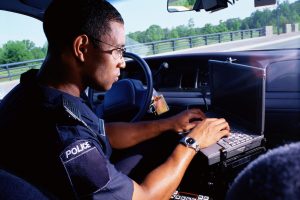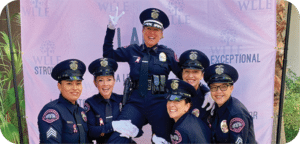We hope you enjoyed our July 2019 Webinar. To make sure you don’t miss the next one, signup here: Lefta Systems Webinar
Please Note: The views expressed herein are those of the presenter; they do not necessarily reflect the views of LEFTA Systems.
“Our webinar today is The Awkward Condition of Using Force in a Free Society. And that’s just a catchy term. But what I’m trying to say is, in America, using force seems a little bit against what we stand for, freedom and that type of thing. But there is a time when as law enforcement officers, we need to use control in order to do our job or protect ourselves and the citizens. Yet sometimes there’s an awkward balance that we have to have.
And again today, if you have any questions, please just use the chat function. I’m watching it and if there’s anything you want to bring up then you can send a chat just to me, I’m the only one that sees that. So, just let me know. And at the end of the discussion, we’ll have a question and answer period if you have anything you want to talk about.
We’re going to examine the use of force in law enforcement. I am your presenter. I can’t believe that that picture is so good. I wake up every morning and look in the mirror and say, “That can’t be right.” But I’m a retired police officer, 33 years in a cruiser and most of that time I’ve spent as an expert witness, you can say, in the use of force options.
Most of my career has been training officers in non-lethal confrontations. I’ve testified in court. I have a unique view of this because I have been sued in federal court twice for excessive use of force. Both were dismissed, but I’ve been on both sides of the bench. Using force is an integral part of police work and we all know that. But what we don’t know is what that looks like.
This is a two part webinar. Today we’re going to talk about a few things. Then next month we’re going to connect it all together and put it to bed. So, at the end of the presentation, I have a link for you to go to register for the webinar for next month.
I am reminded of an article 30 plus years ago that was given to me one day. I was leaving church and somebody pushed this article into my hand. They’d cut it out of a magazine. It was a magazine from the East Coast and I really can’t remember what the magazine was, but I was struck by the article because it said, “Police using force, when it seen by the group,” and I’m just paraphrasing, “When it seen by the public is ugly and brutal when it’s done properly.” That struck me that somebody who was a non-law enforcement understood the fact that it does appear to be ugly and brutal, but it’s a requirement of the job. We are, as law enforcement, the only organization in the country that can legally use force on a free citizen, and a free citizen is everybody just walking around as opposed to a non-free citizen, which is somebody who’s in jail.
I always told my officers that using control is the very last thing that should be in your bag to use because once you start using control, you can’t walk that back. You can’t change. So that’s the very last thing you should use. It’s always been my opinion. The recent trend has been away from using the term use of force and the interesting new phrase, and you’ve heard me use that all through this webinar so far, is use of control. That’s an interesting change. And the modification may seem trivial, but there’s two important purposes with that change in vernacular. It sounds more user friendly to the public, and it specifically describes what our goal is, what we’re trying to do. We’re not trying to use force, we’re trying to control someone. The intended results are the same no matter what you try to do.
The IACP, the International Association of Chiefs of Police definition of use of control is the appropriate amount of effort required by police to compel compliance in unwilling subject. You’re making somebody comply that doesn’t want to comply. That’s the IACP definition. You’re going to learn in a minute how interesting that definition is.
Well, there’s also always an elusive two-part question that has always been, whenever we use control, what is the appropriate level of that control? And sometimes more importantly, who gets to decide how that appropriateness is defined? Who’s going to tell us what is right or wrong?
Let’s take a moment. I always like to just go back and bring us forward. This will be very quick, but I always want to talk about, let’s look at America law enforcement and controlling resistive behaviors. The professional, career police officers is a relatively new phenomenon in our society. Only in the early 20th century have we had actually professional police officers. Minimal requirements. You had to be strong and capable of violence like the Princess Bride. I always say that because that is, if you remember the Princess Bride. Miracle Max, who was Billy Crystal talking to Fezzik, who was one of the giant. When they first meet, he says, “Beat it, or I’ll call the Brute Squad!” Fezzik, one of the giant says, “I’m on the Brute Squad. The Miracle Max requires you are the Brute Squad.” In other words, people like that were desired to be law enforcement officers because they were big and mean, they can control people. That’s what it was for our first part of our century. But they had to have an allegiance to the political machine, and they could be bribed and they can keep their mouth shut about it. That was really the requirements of the early 20th century police officer.
However, in 1929, and I’ll brief on all of this, that brought about the Wickersham Commission, and I’ve always been intrigued about how they described this. The Wickersham Commission came around to investigate the ineffectiveness of law enforcement nationwide. So they already knew there was a problem and they wanted to define it. That’s really after 1929 and we were really getting into the depression era now. That’s really when law enforcement by use of force came under scrutiny. Most agencies up until that time were not customer friendly and they were looked as an occupying force, like a military. Using force, brutality, that was a customary part of the punishment. When you brought somebody to the jail, if they weren’t bruised up, you did something wrong.
Again, the two questions at the heart of the matter in the use of control are, what is the appropriate level? And who gets to define that? Just as another quick look. When I graduated from the Police Academy in Nebraska in 1979, we were taught the Lamb Method for using our nigh sticks. Dr. Arthur Lamb was a Boston police officer, came up with this technique. The target points were the kneecap, the elbows, and the clavicle because the clavicle alone only takes 10 pounds of force to break. The intentions were to do connective tissue damage and break bones. I can see everybody out there squinting, going you! That just doesn’t sound right. And today to us, it doesn’t. We can all agree that that type of activity, that type of use of control is not reasonable unless you’re trying to use lethal force.
But how did we become aware that that was excessive? Here’s where it all starts for us today. Graham versus Connor, a 1989 decision by the Supreme Court. This is a granddaddy of all decisions about using control for law enforce, everything that we do in law enforcement as far as using control is guided by the grand decision. And just really quick on that so you know what I liked.
I like the background. Graham versus Connor, Graham was a gentleman in the North Carolina that was having a diabetic reaction. Ran into a store, couldn’t wait in line, ran back out. This was witnessed by officer Connor, who stopped the car he was in. Of course Mr. Graham was exhibiting some odd behavior because he was going to do a diabetic shock. The result was, there was some injury to Mr. Graham but they let him go at the end. He sued about being stopped, illegal stop, and the Supreme Court said, “We think that was okay eventually.” They judge all of our actions on using force to the 4th Amendment on the Search and Seizure Clause. Even if a police officer were to shoot someone, it’s through the 4th Amendment Seizure Clause. They look at, and this is the term they’re going to always look at, and it came up at both of my hearings, was objectively reasonable. Was the officer reasonable, objectively reasonable?
They don’t care about your underlying intent. They don’t care what you think. It’s only what you know, and they look at this perspective from a reasonable officer on the scene, not from 20/20 hindsight. You can’t bring something up to say. “We used force on this gentleman. But then we found a gun in his pocket afterwards.” It doesn’t matter. They look at what you saw right then and there and they judge it from an officer’s standpoint, not from a citizen who honestly has sometimes very little idea of how force is judged.
So they look at it from an officer’s standpoint. And the Supreme Court knows that it’s challenging. They know that force is used in a quick paced situation and we’re required to make decisions rapidly. The court doesn’t want us to be perfect. They’re saying, “We just want your response to be reasonable.” That’s all they’re asking. These are some of the things they’ll look at when they judge that. Severity, did they pose an imminent threat, are they actively resisting, mental health of the subject, if you know ability of less-lethal options, and then the objective facts, what objectively occurred during the encounter.
Here’s a description of use of force by the ACLU and I think I agree with this, particularly the second part that says, “Their vision is a nation where no community has to fear the police and where arrest and use of force by law enforcement are last resorts, not first options.” I agree with that wholeheartedly. I do.
US Commission, let’s talk about the problem itself. The US Commission on Civil Rights in 2018 started doing a study on excessive use of force and here’s what they found out. They found out that allegations of excesses or unjustified use of the force, there is insufficient data to determine this is accurate. This is in 2018. And both sides have compelling narratives on the issue, whether it’s law enforcement or the community. In a lot of times, those two narratives don’t, are in competition.
But even 20 years ago, the US Department of Justice tried to start collecting voluntary information on use of force from the 18000 agencies in the country. Few participated, worried about additional unfunded mandates, they didn’t want to be vilified in the media. A big one is, there was no definition on what data to include in the report. Are bean bags part of excessive use, or muscling techniques reported, or Terry stops included? There was really no definition.
More recently, the FBI in January 1st of this year has started a new program, a voluntary program similar to NIBRS, National Incident-Based Reporting System or the Uniform Crime Report where they are collecting data for a national use of force program. And I’m just going to throw a pitch out here. LEFTA Systems, we also, we have a use of force documentation program called FACTS that can link directly to the FBI database. Just wanted to throw that out there. We’re in tune with that.
Recently, let’s look at some quick numbers. 67 million general face-to-face contacts in a year, and I’m not good at math, but that’s like over a million a week, officer’s have a 30% chance of being injured. This study showed 1.8% of all people experience threats or use of force. A different study said less than 1% did. Blacks are involved with more use of force incidents at a higher rate. Hispanics and whites, whites are the least. 84% thought there was excessive use. But the problem is, other studies show different competing numbers and that’s the real issue. There is no real set and defined definition of how to collect data and what that data should look like.
Let me just share some final thoughts with you. But we might all agree that that magazine article I mentioned at the beginning of our journey today, that police work can be ugly and brutal when it’s done correctly, that’s absolutely true. A standard regular American [arrogest 00:13:04] ever understands what police work is about.
We might also agree that there has not been a consistent responsible effort to collect reliable data on this matter. The federal government says that, hence the FBI’s problem on collecting data. And for the most part, we need more accurate and consistent research on use of control and there are too many variables to make data collection… it’s difficult to precisely define. But police officers in the United States are doing an amazing job.
Next month, we’d sure love to have you join us for our second part of this webinar where we pull everything together. We’re going to talk about policies and training for officers and we’re going to talk about considerations on documenting the use of control. Here is the address to our website. It’s LEFTASystems.org/webinar. We’d love you to sign up for next month.
I’m looking here at the question section. Oh, here’s a great question. Do you think cops in today’s age are scared to use force? That specific question was addressed in use of force user control conference I was at. It was a conference I was, for use of force experts. And that specific question was addressed and the consensus was that police officers use less force than they really should. Our goal is to use as much force as possible as soon in the confrontation as possible to bring it to a quick and swift end. However, and actually like I said, great question. Officers are afraid of being vilified in a news media, have their agency… like I’ve run him over with a bus, they’re afraid of that. So, excuse me, in my opinion, I do believe that officers are afraid to use as much force as they can for those reasons. And here’s the problem with that honestly. If we allow a confrontation to continue and we’re afraid to use a higher level of force to bring it to an end, it will ultimately end up with higher levels of force to control somebody. Maybe even to the point where you have to use lethal force because you’ve let this confrontation go on so long that you are out of gas and you can’t fight this person anymore.
Ah, let’s see. It seems officers are taught to almost back down to then order to avoid a physical confrontation. Have you found this to be so? That’s kind of a parallel to the first question. Let me, I’m going to throw this out there. Even career interest certified agency is really big on deescalation and I always have been as well. I’ve always told people, it is a lot easier to stay out of trouble than to get out of trouble.
So, if you can talk somebody down, if you can gesture somebody into submission, if you can prevent them from going to a level where you have to use control, you just won the whole day. So, I don’t think officers should be backing down, but I think they should be talking down people who are aggressive. And I think that, I don’t think… we’ll talk about that next month. But I think there should be more emphasis on deescalation.
And I also always get this question too, especially when I’m out in the public and I do seminars on personal defense. I’m always asked in some form or another, why don’t police in real life do what I see on television. Right now I can see everybody leaning back in their chair and giggling. But it’s true. People don’t understand. All they see is television and movies, and that is nothing like what happens in the real life.
Very few police officers have to use their weapons in the line of duty, but this happens all the time in television and in the movies. It happens so much in the television and in the movies that people tend to think that we use our firearms a good deal, when in reality we very rarely use our firearms. So, television and movies do not have an accurate portrayal of exactly how police officers operate in a cruiser.
When I do my talks in the public, this is why I always recommend people to go on a ride along with law enforcement, which usually is a big eye opener for them. And it starts with me with having them wear some body armor. That right there puts them in a little bit different frame of mind.
Next month, I surely want you to show up so that we can continue our conversation and wrap this up. Talk about policies and training and the reporting process. I’m looking forward to seeing everybody. Here is our question in comment slide. I think that is it for this month. I’m looking forward to seeing everybody next month. Thank you very much.”




